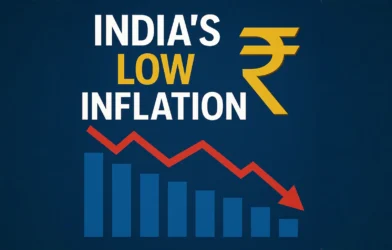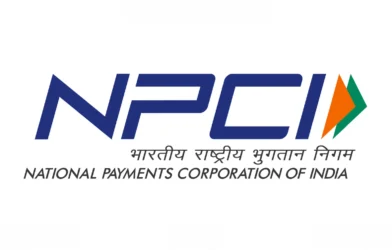India has made a landmark breakthrough in its energy exploration efforts with the discovery of natural gas in the Andaman Sea. Officials have confirmed that preliminary tests revealed the gas contains an impressive 87% methane, a sign of its potential as a clean and efficient fuel source. The find, made at the Sri Vijayapuram-2 exploratory well, marks the first confirmed hydrocarbon occurrence in the Andaman offshore basin and could play a transformative role in India’s energy future.
The Discovery in Detail
The exploratory well, named Sri Vijayapuram-2, is located around 17 kilometers east of the Andaman Islands, drilled in water depths of nearly 295 meters. Targeting a total depth of 2,650 meters, the well encountered promising signs of hydrocarbons during drilling. Between depths of 2,212 and 2,250 meters, intermittent gas flaring was observed, indicating the presence of natural gas pockets.
Subsequent sampling and testing confirmed a methane concentration of 87%. Methane-rich gas is particularly valuable as it burns cleaner than other fossil fuels and is widely used for power generation, industrial applications, and as a transition fuel toward a low-carbon economy.
While the initial find has generated excitement, experts caution that the size of the reservoir and its commercial viability are yet to be fully established. Isotope analysis and further testing are being conducted to determine the quality of the resource and to determine whether it is of biogenic or thermogenic origin.
Strategic Importance of the Find
- First in the Andaman Offshore Basin
This is the first confirmed hydrocarbon discovery in the Andaman offshore region. For decades, geologists suspected the basin could host reserves, given its proximity to resource-rich areas in Myanmar to the north and Indonesia to the south. The confirmation significantly boosts confidence in India’s offshore exploration programs. - Energy Security and Import Reduction
India imports over half of its natural gas requirements, making domestic discoveries critical for long-term energy security. A successful commercial development in the Andaman Sea could help reduce this dependency, strengthening the country’s self-reliance in energy. - Support for Deepwater Exploration Mission
The discovery is also seen as a boost to the government’s National Deep Water Exploration Mission, recently launched to accelerate offshore drilling. Known informally as “Samudra Manthan,” the mission aims to expand India’s capabilities in deepwater exploration, which remains relatively underdeveloped compared to global peers. - Comparisons with Global Benchmarks
Policymakers have hinted at the potential for “Guyana-scale” discoveries in India’s offshore basins. While such comparisons remain aspirational, the find raises hopes that India could unlock reserves of significant magnitude if follow-up drilling and testing confirm larger accumulations.
Opportunities and Challenges Ahead
While the discovery is promising, several hurdles need to be addressed before any meaningful production can begin.
- Commercial Viability
The mere presence of gas does not guarantee profitable extraction. Assessments of flow rates, pressure levels, and recoverable volumes are critical to understanding whether large-scale production is feasible. - Infrastructure Requirements
Developing offshore fields requires significant investment in pipelines, processing plants, and transport facilities. In the Andaman region, infrastructure is limited, and setting up the necessary systems will involve high costs and logistical challenges. - Environmental Considerations
The Andaman Islands are ecologically sensitive, with rich biodiversity both on land and in surrounding waters. Strict environmental assessments and sustainable practices will be essential to ensure that exploration and production do not disrupt fragile ecosystems. - Technical Complexities of Deepwater Drilling
Operating in water depths of up to 300 meters and drilling thousands of meters below the seabed requires advanced technology and expertise. Such projects often require collaborations with global energy companies experienced in deepwater operations.
A Potential Game-Changer
Despite these challenges, industry experts view the discovery as a game-changing moment for India’s energy landscape. If further appraisal confirms commercially recoverable reserves, the Andaman offshore could emerge as a new frontier for hydrocarbon production.
Beyond domestic energy supply, such a find could attract international investment and partnerships, positioning India as a stronger player in the regional energy market. The government is expected to encourage further exploration activity, potentially opening additional blocks for bidding in future licensing rounds.
What Comes Next
The next stages will focus on:
- Conducting appraisal drilling to determine the extent and size of the reservoir.
- Carrying out long-duration flow tests to estimate production capacity.
- Evaluating infrastructure options, including subsea pipelines or floating production units.
- Engaging with potential investors and technology partners to share risks and costs.
While it may take several years before production begins, the discovery has already energized India’s exploration landscape and reaffirmed the strategic importance of offshore basins.
Conclusion
The natural gas discovery in the Andaman Sea, with its high methane content of 87%, represents a historic milestone in India’s quest for energy security and self-reliance. Though commercial viability remains unproven, the find underscores the untapped potential of India’s offshore basins and aligns with the government’s vision to expand deepwater exploration.
If subsequent studies confirm the scale of the reserves, the Andaman discovery could herald a new chapter in India’s energy journey—one that reduces import dependency, boosts clean energy adoption, and strengthens India’s position in the global energy map.
Disclaimer: This article is based on information available from public sources. It has not been reported by EQMint journalists. EQMint has compiled and presented the content for informational purposes only and does not guarantee its accuracy or completeness. Readers are advised to verify details independently before relying on them.









